

Uh oh...
It appears that you're using a severely outdated version of Safari on Windows. Many features won't work correctly, and functionality can't be guaranteed. Please try viewing this website in Edge, Mozilla, Chrome, or another modern browser. Sorry for any inconvenience this may have caused!
Read More about this safari issue.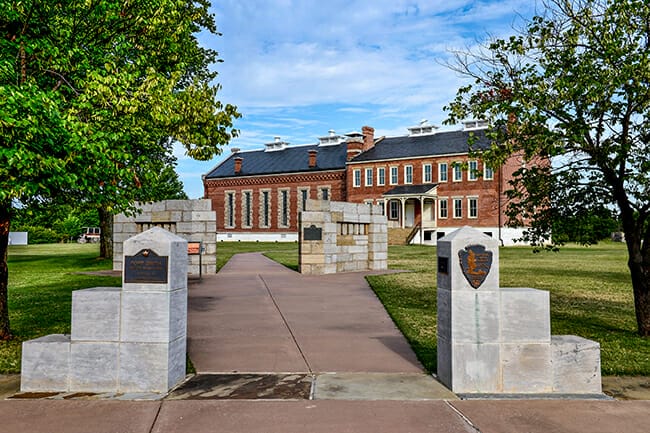

Does Arkansas have culture? Of course it does. Culture is simply the traditions, beliefs and practices of a particular people in a particular place. Arkansas certainly has plenty of people– over 3 million currently call Arkansas home–but what are the traditions, beliefs and practices that create Arkansas culture?

The South Meets The Midwest
Arkansas is at an interesting junction between the South and Midwest in the United States. Most maps place Arkansas in the southeast region of the country, but with its proximity to Oklahoma and Texas, Arkansas doesn’t share the same deep South culture as some of its southern neighbors. Arkansas was considered part of the Southwest for a while because of its position next to Oklahoma, which was “Indian Territory,” and its location on the Southwest Trail, which ran through Arkansas into Texas and brought many settlers to both states.
Because of its relative isolation through natural boundaries like the Ozark and Ouachita Mountains and the Mississippi River, Arkansas remained a frontier state much longer than many southern states. This meant Arkansas was slower to develop economically and maintained a wilder reputation for many years. This reputation grew from its connection to criminals that made a habit of hiding out in Indian Territory and nearby Arkansas. Belle Starr and Bill Doolin are just two of the most famous criminals known to have operated in the state.
Early Arkansas pioneers are responsible for establishing much of the cultural stereotypes about Arkansas. They were not the first to live in the state. The Quapaw and Caddo called this area home, as well as other Native American tribes, but by 1833, the tribes had been removed.
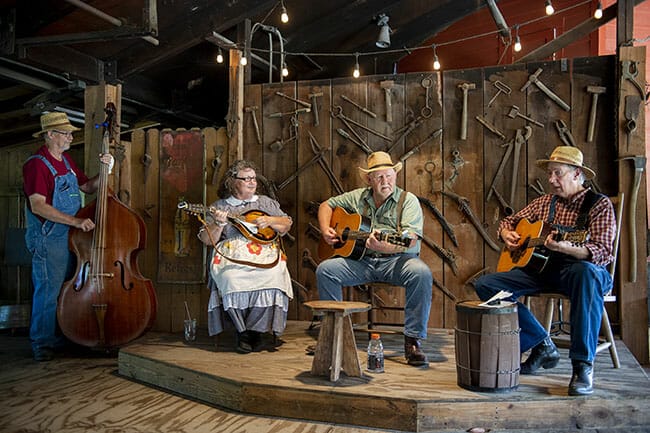
Ozark Folk Center State Park – courtesy of Arkansas Parks and Tourism.
The Arkansas Hillbillies
Arkansas was then settled by European immigrants and their descendants who came from other states as westward expansion pushed the boundaries of the United States. In the mountains in Arkansas, the European settlers and their descendants were mainly Scottish and Irish. They brought many traditions with them that have established part of Arkansas culture and formed the base of what became known as Arkansas hillbillies. This culture is the one that most defined Arkansas in the 19th and 20th centuries.
Hillbilly culture grew out of the poverty, resourcefulness and independence of the hillfolk in the Ozark Mountains, and to some extent, the Ouachitas. These rural, white Arkansans continued the traditions handed down to them from their Scottish Highland ancestors, like basket weaving and folk music, and, of course, the hillbilly image made popular throughout literature like Thomas W. Jackson’s “On A Slow Train Through Arkansas” and Opie Read’s journal-like entries of “The Arkansaw Traveler.”
These stereotypes persisted into the 20th century with the radio show “Lum n’ Abner” and the television series “The Beverly Hillbillies.” Unfairly or not, this image has stuck with the state for much of its existence, although the culture of Arkansas is certainly far more than this single influence.
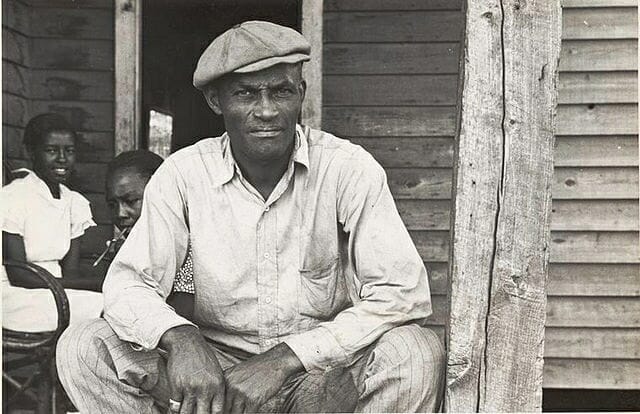
Slavery and Civil Rights
The Delta region of Arkansas, for example, shares more in common with its southern neighbors. Although separated by the Mississippi River from the rest of the South, this region is more closely identified with typical Southern culture, which includes a closer tie to the history of slavery, plantations, and agriculture. In 1860, 111,115 slaves were in Arkansas out of a total population of 435,450.
After the Civil War ended, the Black population continued to live in the Delta region of Arkansas, influencing its culture with food, music and stories drawn from Black communities. Jazz and the blues thrived in juke joints up and down the Mississippi, music that stemmed from Black culture with its roots in slavery and songs sung in the fields. Helena and West Memphis in particular became hotbeds for talented musicians, many of them Black.
Arkansas had a tense relationship with the civil rights movement of the 1960s that resulted in the desegregation of public schools, among other achievements. Arkansas found itself in the national spotlight when Central High School in Little Rock admitted nine Black students in 1957. Arkansas’s tense racial history has influenced its culture as well, and still influences the state today.
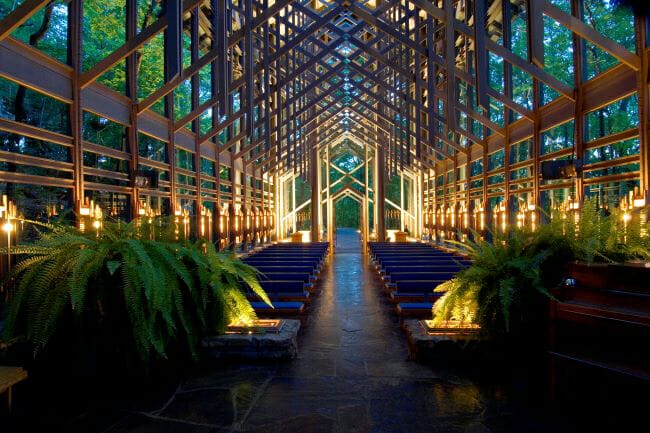
Thorncrown Chapel Eureka Springs courtesy of Arkansas Parks and Tourism.
Religion
Religion has also played a large role in shaping Arkansas culture. When European settlers first came to the state, they were largely Catholic, but soon waves of Protestant immigrants followed. Baptist and Methodist churches emerged as the largest denominations, with many others that followed, including the African Methodist Church. The church was often a central part of community life, especially in rural towns, where much of the social life of the town involved church activities. Today, Arkansas remains one of the most religious states in the United States, and churches continue to be centers for religious and social activities.
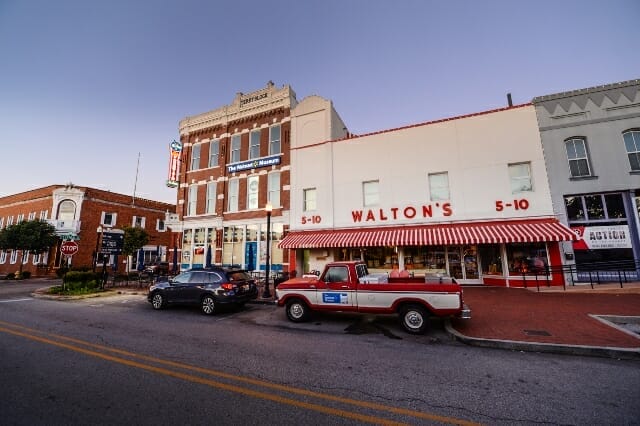
Big Business and Migration Begins to Shape Arkansas Culture
In the second half of the 19th century, Arkansas began a shift from mainly agricultural industries to large national, and even international, companies. Tyson Foods, Walmart Inc., Dillard’s, J.B. Hunt Transportation Services, Alltel, and others initiated growth in Little Rock and Northwest Arkansas. These businesses drew in immigrants as well. The Latino population in Arkansas has grown to 18.7% statewide, with many communities experiencing larger populations. Latino communities have started to shift Arkansas culture away from the hillbilly image to a more diverse culture. Other international communities are calling Arkansas home as well, like the large Marshallese community in Springdale, Arkansas.
It’s not just international immigration shifting Arkansas’s culture. Within the U.S., Californians make up one of the largest groups of people moving into the state. Many retirees from more northern states have also moved to Arkansas. These groups continue to influence the state in different ways.

Food
Food has always taken center stage in defining culture, and Arkansas is fortunate to have several food traditions to experience. This includes traditional southern fare like fried chicken, cornbread, beans, collard greens, and catfish. Although this food is likely no longer the dinner table staple of the state, it’s preserved in many local restaurants, as well as festivals and special events. Then, of course, BBQ grabs the spotlight as well, often blending those Southern and Midwest influences to create pork and beef barbecue that is tender and mouth-watering. Cabot strawberries, Cave City watermelons, Arkansas Traveler tomatoes, Riceland rice and always on the top of the list is chocolate gravy!
In recent years, Latino fare has also worked its way into Arkansas culture, with taquerias, pupuserias, and specialty restaurants serving cuisine traced to Mexico, El Salvador, Honduras, and other cultures.
For more Arkansas food stories, check out the food section of this site written by the most well-respected and loved food writers in Arkansas: The Mighty Rib (Kevin Shalin), Simply Joyful Food (Lyndi Fultz), Easy Peasy Pleasy (Lacie Ring).

Crystal Bridges Museum of American Art – courtesy of Arkansas Parks and Tourism.
Art
Art is an expression of culture, and Arkansas is working hard to preserve its original artistic influences and create new ones. The Ozark Folk Center State Park focuses on preserving the traditional music, crafts and culture that shaped Arkansas early on. The Delta Cultural Center similarly preserves the history and culture of the Delta region, including the longest-running Blues radio broadcast in the world. Crystal Bridges Museum of American Art brings incredible art to that state, while places like The Rep in Little Rock offer local theater opportunities. The Latino Art Project and Latin Art Organization of Arkansas spotlight Latino talent in the state.
Arkansas in the 21st century looks very different from its early days as a state, and its culture has shifted dramatically, but the state isn’t done, yet. Arkansas is pushing back against the traditional views of the state in some ways. It’s no longer a state full of hillbillies (though, it never was in the first place). As Arkansas moves forward, its culture will shift more as the state welcomes new people and continues to recognize the importance of cultures that have long impacted the state, among them Native American tribes and the Black and Latino communities. This growing diversity makes Arkansas an interesting and exciting place to live.
We do the work.
You check your email.
Sign up for our weekly e-news.
Get stories sent straight to your inbox!












 Leave a Reply
Leave a Reply
Enjoyed your summary of Arkansas culture. It is a huge topic, and could easily take up the content of a book or two. So condensing it to a blog-length entry is noteworthy.
I will add that a mention of Crystal Bridges Museum is certainly appropriate when discussing the subject of fine art it is only 10 years old. And it’s focus is on American art. The best place to see art with a direct connection to Arkansas – that is, in terms of subject matter or artists from the state – is the Historic Arkansas Museum in Little Rock. It’s been around for many decades. Another good choice is the Arkansas Museum of Fine Arts (formerly Arkansas Arts Center), also in LR. It was founded in 1937.
Finally, some artists worth writing about who worked in Arkansas in the 20th century include Everett Spruce, Adrian Brewer, Olin & Kathryne Hail Travis, Carroll Cloar, Louis Freund, and John Howard. Too many great artists to list here.
Keep up the good work!
[…] Sourceshttps://onlyinark.com/culture/culture-of-arkansas/, https://en.wikipedia.org/wiki/Geography_of_Arkansas, […]